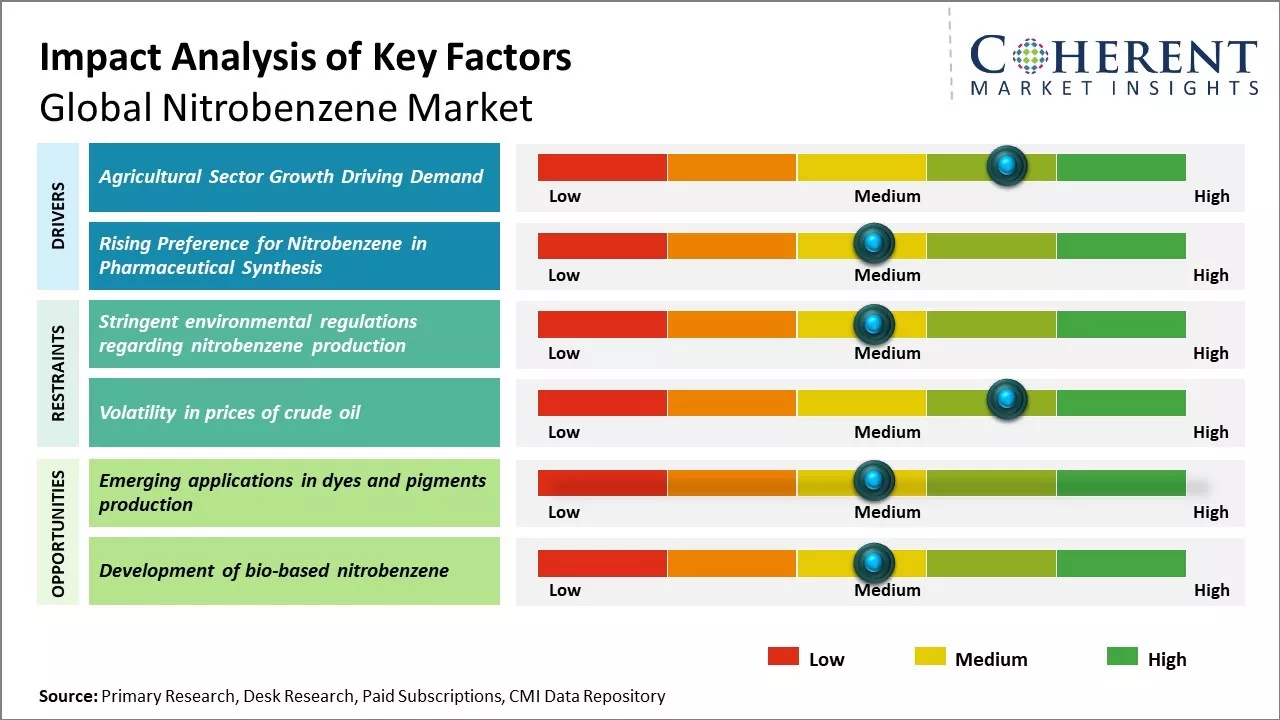The nitrobenzene market is estimated to be valued at USD 12.84 Bn in 2025 and is expected to reach USD 18.95 Bn by 2032, exhibiting a compound annual growth rate (CAGR) of 5.7% from 2025 to 2032.

To learn more about this report, Request sample copy
The global nitrobenzene market is expected to witness moderate growth over the forecast period. Increased demand from the chemical intermediates and end-use industries such as construction, automotive along with rising automotive production will drive the nitrobenzene market growth. Further, growing agriculture sector leading to rising demand for aniline, a key derivative is expected to propel the nitrobenzene demand. However, inventory pressure from China amid oversupply and fluctuations in crude oil prices remains a concern. Nevertheless, growing infrastructure development and car sales mainly in Asia Pacific is likely to offer new opportunities for market growth in the coming years.
Agricultural Sector Growth is Driving Demand
The global agricultural sector has seen steady growth over the past few decades, fueled by rising population and income levels across major developing economies. Nitrobenzene serves as a key intermediate in the production of aniline, which is further used to manufacture agricultural chemicals such as herbicides, pesticides, and fungicides. With food demand expected to increase substantially in the coming years to meet the needs of billions more consumers, agricultural yields must grow in tandem. This will mandate greater use of agrochemicals to boost and protect crop output from pests and adverse climate conditions.
Being an essential chemical building block, increased nitrobenzene consumption is likely to follow the expanding agrochemical industry. Leading crop protection majors have been investing heavily in developing markets to make vital formulations more accessible and affordable for smallholder farmers. Intensifying agricultural mechanization is also creating the demand for highly effective synthetic inputs. Meanwhile, multi-national companies have been developing bio-based and eco-friendly alternatives to reduce environmental footprint, playing to sustainability goals of governments and growing health concerns of consumers. However, these novel solutions will still rely on conventional intermediates like nitrobenzene for quite some time due to technological and cost constraints.
Overall, the interlinked forces of socio-economic development, policy support for food security, and agro-industry R&D present a strong growth outlook for the global agricultural sector. As nitrobenzene acts as a backbone material for agrochemical production, consistent gains in agriculture can be expected to drive its consumption volumes considerably over the next decade or more.
Joining thousands of companies around the world committed to making the Excellent Business Solutions.
View All Our Clients